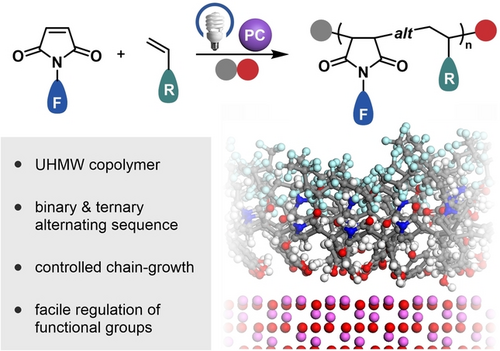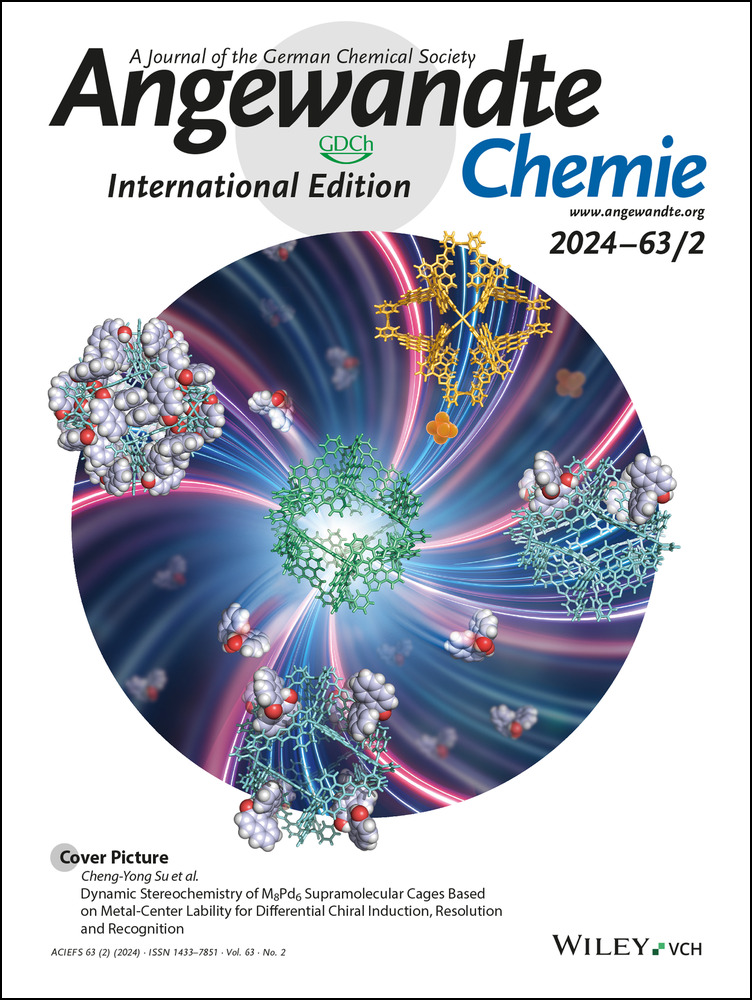Organocatalyzed Photo-Controlled Synthesis of Ultrahigh-Molecular-Weight Fluorinated Alternating Copolymers
Graphical Abstract
A robust organocatalyzed photo-controlled radical alternating copolymerization was established, enabling facile access to binary and ternary fluorinated copolymers with predefined ultrahigh molecular weights (UHMWs), well-defined structures and functional pendants. The UHMW fluoropolymers presented clearly improved physical properties, and furnished anticorrosive, (super)hydrophobic attributes as protective coatings on diverse substrates.
Abstract
Ultrahigh-molecular-weight (UHMW) polymers with tailored structures are highly desirable for the outstanding properties. In this work, we developed a novel photoorganocatalyzed controlled radical alternating copolymerizations of fluoroalkyl maleimide and diverse vinyl comonomers, enabling efficient preparation of fluorinated copolymers of predetermined UHMWs and well-defined structures at high conversions. Versatility of this method was demonstrated by expanding to controlled terpolymerization, which allows facial access toward fluorinated terpolymers of UHMWs and functional pendants. The obtained copolymers exhibited attractive physical properties and furnished thermoplastic, anticorrosive and (super)hydrophobic attributes as coatings on different substrates. Molecular simulations provided insights into the coating morphology, which unveiled a fluorous protective layer on the top surface with polar groups attached to the bottom substrate, resulting in good adhesion and hydrophobicity, simultaneously. This synthetic method and customized copolymers shed light on the design of high-performance coatings by macromolecular engineering.
Conflict of interest
The authors declare no conflict of interest.
Open Research
Data Availability Statement
The data that support the findings of this study are available in the supplementary material of this article.





